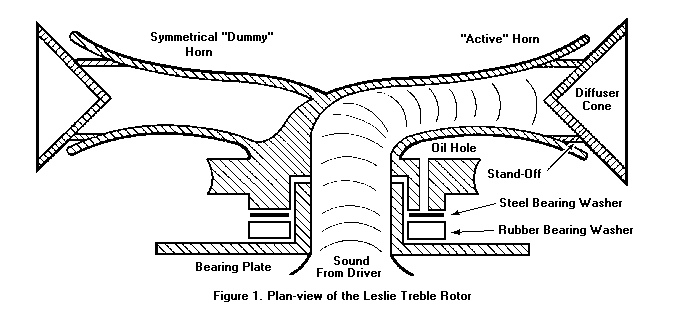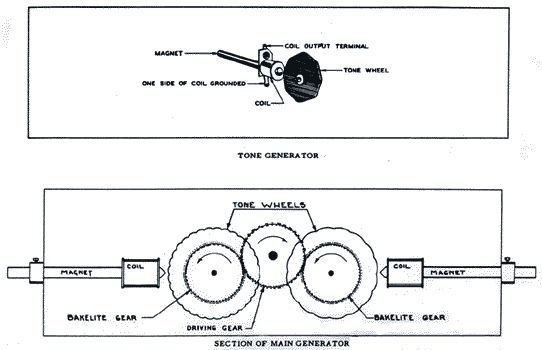Links
May 13, 2012 at 11:43 PM by Dr. Drang
Last week I was going to write a post about Leslie speakers. My hook was going to be the use of “Tomorrow Never Knows” in last week’s episode of Mad Men. A famous story about the recording of “Tomorrow Never Knows” is that John’s voice was fed through a Leslie speaker to get that ethereal sound. This was in lieu of
- a chorus of Tibetan monks, or
- suspending John from a rope tied to the ceiling and spinning him around as he sang,
both of which were John’s ideas.
Leslie speakers were one of the many clever audio devices that people came up with the the pre-digital age. Inventors had to be clever back then because you couldn’t just throw massive amounts of computing power at a problem to get a solution. The Leslie achieved its unique sound by spinning its speakers around to get both a tremolo, because volume changed as the speakers went from pointing toward you to pointing away from you, and a vibrato due to the Doppler effect.
(Image taken from Clifford Hendricksen article.)
It’s hard, though, to write an article about the Leslie without also writing about the Hammond tonewheel organ, with which it was usually paired. In fact, there was no microphone input to the Leslie at Abbey Road; it was so intimately tied to the Hammond that the engineers had to open up the speaker cabinet to wire the mic in directly.
The Hammond was perhaps an even greater example of pre-digital cleverness. It was, in effect, an electromechanical synthesizer, generating pure tones in harmonic series that were added together to create particular timbres. The pure tones were made by spinning toothed wheels—gears, basically—in front of electromagnetic pickups. The spinning gear changed the magnetic field in a regular, sinusoidal pattern, inducing a sinusoidal current in the pickup’s coil. If this sounds suspiciously like the way an electric guitar works, it’s because it is, with the spinning gear taking the place of the vibrating string. In fact, it’s so much like an electric guitar, you’d think it would’ve been invented by Les Paul.
(Image taken from Keyboard Exchange International.)
The organist had great control over how the harmonics were added through the manipulation of a series of drawbars. The similarity between the drawbars on a Hammond and the stops on a pipe organ can’t be coincidental. The Hammond was, and still is, marketed largely to churches who want that churchy organ sound but can’t afford a pipe organ.
Soon, the Hammond sound, especially the B3 model, worked its way into blues, R&B, and rock and roll. My article got sidetracked for a day or two as I spent hours on YouTube looking at videos of Keith Emerson, Jon Lord, Jimmy Smith, Gregg Rolie, and Rod Argent. Research, don’t you know.
This morning I woke up to the news that Duck Dunn had died, leaving only half of the great Stax house band still with us. I doubt more than a week ever goes by without me listening to at least one song with Dunn on it.
I don’t think I’ll ever write that Tomorrow Never Knows/Leslie/Hammond post. As with a lot of my ideas, it just didn’t come together. But this time I decided to give you the links so you can make up your own post.
And I’ll add this: the quintessential R&B instrumental with the classic lineup of Al Jackson, Jr. on drums, Donald “Duck” Dunn on bass, Steve Cropper on guitar, and Booker T. Jones on the Hammond B3.



